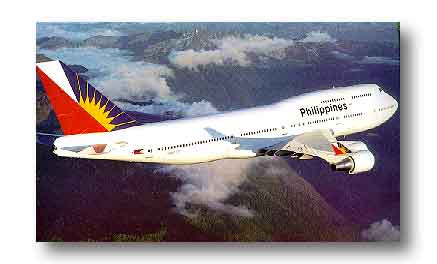November 29, 2009
 HAGATNA, Guam - Continental Micronesia is upgrading its service between Guam and Manila starting next year, says Ramon Magno, general manager of Continental Airlines in the Philippines.
HAGATNA, Guam - Continental Micronesia is upgrading its service between Guam and Manila starting next year, says Ramon Magno, general manager of Continental Airlines in the Philippines.The announcement came after Continental Micronesia President Charles Duncan declared Tuesday the airlines plan for its Guam hub expansion as it partake in the $15 billion U.S. military build-up in Guam. Duncan became the president of Continental Micronesia in July as the airline heightened its focus on travel in the Asia-Pacific region.
Duncan said there are 1,200 Continental employees on Guam and Micronesia operates 12 planes of the airline's global fleet, mainly consisting of Boeing 737-800 for Asia Pacific Region and Boeing 767-400 for its service to Japan.
In the meantime, Guam Senator Judith P. Guthertz, chairperson on Guam military build-up an homeland security, said that at least 15,000 Filipino workers would be hired starting next year until 2014 for construction efforts in the Island when the build-up is supposed to be completed.
She said the H2 Visa, which restricts the entry of foreign skilled workers, has been lifted by the U.S. government for Guam paving the way for the entry of foreign workers.
The 15,000 jobs from the Philippine labor market that would be created until 2014 do not yet include the projects to be funded by the Japanese government, which agreed to fund the relocation facilities for the U.S. Navy that would be transferred from the U.S. naval base in Okinawa.
Guthertz said that its labor recruit from the Philippines may rise twice as expected because of ancillary and other support services that needs to be build as the military build-up would require new road networks, water and sewerage, power, housing, hospitals and other infrastructure. There will also be build-up off base.
Guam used to be a province of the Philippines during the Spanish period. The island separated from the the Philippines when it opted for Independence in 1946. At least 30 percent of Guam’s population is of Filipino ancestry and that Filipinos were in the forefront in the reconstruction of Guam after the World War II.
"For Guam, the visa waiver program and the military buildup will be the two largest influences to shape the future of the tourism industry", Duncan said. He added that the expectation from Continental is that the buildup will bring more Filipino workers here. He said further that the airline may have to consider more flights to and from Manila. Duncan said Continental is already doing its own data analysis and study of opportunities to decide whether to book more flights, or perhaps bring in bigger aircraft to serve Guam-Manila market.
"It is this market that we are trying to catch" says Magno. Continental Micronesia Airlines flies daily from Manila to Guam. "However, flights between Manila and Saipan that was ended in July 16, 2008 may not be restored at all" he said.
Traffic to Saipan has mostly been fueled by Filipino nurses taking National Council Licensure Examination (NCLEX) at the PearsonVue testing center in the US island. Nurses from the Philippines and other foreign countries need to take and pass the NCLEX to be eligible to practice nursing in the United States and its territories, including Guam and the Commonwealth of the Northern Mariana Islands (CNMI).
When NCLEX was offered in the Philippines in August 2007, passenger traffic to the island substantially dropped prompting the airline to drop its service there, adds Magno.
Meanwhile, not to be left out of the boom, Philippine Airlines is prepared to double its capacity to Guam by flying twice daily when the need arises. Currently, PAL flies 4 times a week to the US territory from Manila using Airbus 320 aircraft. But it may be constrained to put its additional capacity on hold because of the category 2 status of the country imposed by FAA, the aviation regulatory agency of the Island Federation.













